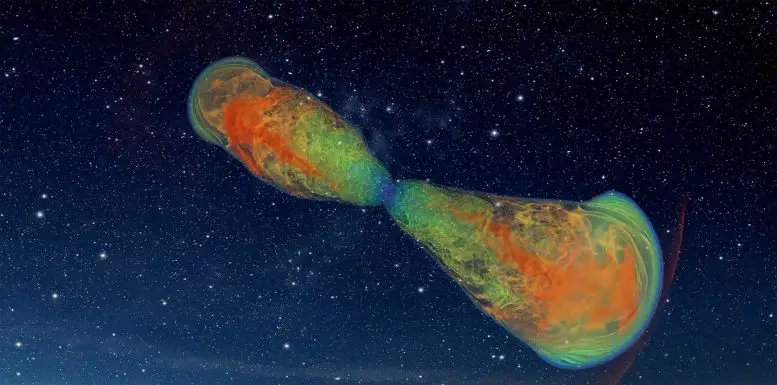Is this the first evidence of the existence of gravitons? The model of this phenomenon is that the energy impact from dying stars has a high enough energy level and density that it can pump energy straight to gravitons. And when the energy pump ends, those gravitons deliver their extra energy as waves called gravitational waves.
Dying star cocoons or impact waves are unexpected sources of gravitational waves. When jets escape from the supernovas, they create cocoons of the stellar material impact waves. Those cocoons are made of extremely dense material that travels just after extremely high-power radiation. The front side of those is very hot plasma, and it pushes material at the front of it before it breaks down and delivers its energy.
Finding gravitational waves in those cocoons is a surprise. There have been models that show that if somewhere there are impact waves with a high enough energy level and density, that thing can cause interaction with hypothetical gravitons. And the material cocoons of supernovae can have that needed energy level and density so that they can interact with or push energy toward those hypothetical gravitons.
"As a jet escapes from a collapsed star, it punches into a cocoon of stellar debris. Credit: Ore Gottlieb/CIERA/Northwestern University". (ScitechDaily.com/Dying Stars’ Cocoons: A New Unexpected Source of Gravitational Waves)The hypothetical graviton, or transmitter particle of gravitation, is nevertheless a particle. It acts like all other particles. But the problem with gravitons is that they are so small that their radiation is hard to detect. When energy stress impacts gravitons, energy transfer to those particles continues until the particle's energy level is higher than its environment. And when energy stress ends, particles deliver their energy. This means that particles attempt to reach the same energy level as their environment.
So if the impact wave that comes out of the dying star has high enough energy and material density, that impact wave can pump energy into gravitons. And when the impact waves turn colder or their energy level decreases, those gravitons deliver their extra energy in the form of radiation, whose wavelength is the same as the diameter of the particle that delivers it.
The problem with the gravitons is that they are very small. In the case of extremely small particles, there is no room for energy in the particle itself. When energy impacts a small particle, it reflects that energy out of it immediately. And then that energy forms the impact wave or bubble around that particle. This quantum bubble makes the wave movement travel over the particle. And this thing denies the reflection from those particles.
So to make the reflection from extremely small particles, the system must make an impact wave that has a high enough density and a high enough energy level that it can break the quantum bubble around those extremely small particles and make the reflection from the particle itself. So is this evidence of gravitons?
https://scitechdaily.com/dying-stars-cocoons-a-new-unexpected-source-of-gravitational-waves/?expand_article=1




No comments:
Post a Comment
Note: Only a member of this blog may post a comment.